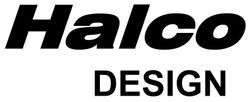Unknown,
Designed
Mechanical Design
Reverse Engineering
3D Printing
Providing Outsourced Mechanical Engineering Services
Satisfaction Guaranteed
We treat every project with the respect it deserves, and don't stop until you are satisfied.
- Mechanical Design Engineering
In industry, mechanical design engineers are responsible for the physical characteristics of everything that gets produced. We maintain the design in a 3D CAD system. We produce engineering drawings (and maintain proper revision control). We work with suppliers to get parts made. And like all engineers, we love solving problems.
- Design for Manufacture (DFM)
Design for Manufacture is about understanding the manufacturing impacts of design decisions throughout the design process. Good mechanical design engineers understand how parts are manufactured. We also recognize what manufacturing method is best for a particular application. Should a part be designed for injection molding? Should it be machined from aluminum? Or cast in steel? Once we answer that question, the design of the part itself needs to be reflective of that decision.
- Design for Assembly (DFA)
Have you ever put something together where you could barely reach one of the screws? Imagine an assembly line of works perpetually not being able to reach the same screw. Good designs account for assembly early in the process. When done correctly, you’ll never even know it was taken into consideration – it just works.
- Engineering Analysis
How much pre-load is that bolt pattern generating? How stiff of a spring do we need to hold our mechanism together? What is the maximum load that a component can support? Those are the kinds of questions we answer with mechanical analysis. Sometimes this involves simple hand calculations. Sometimes an Excel or MathCAD worksheet is what we need. Other times, advanced computer simulation is necessary.
Services
3D Product Design
Once we know exactly what we want, we’ll generate a 3D model of your concept. Sometimes we call this a “virtual prototype” – we can’t hold it in our hands, but we can accomplish many things without incurring the expense and risk producing actual components. Depending on our goals (are we building a prototype or just some flash images to help you market the idea?) will determine the detail and effort that we need to put in. In any event, your design is created in a premier 3D design and engineering package (SolidWorks).
Prototype Design and Support
In many cases, a virtual prototype isn’t enough. We want something we can hold in our hands or test for its intended function. Prototypes are often classified into two categories: (1) works-like and (2) looks-like. A “works-like” prototype is used to test the actual function of a product. A “looks-like” prototype might not actually work, but it communicates the final look and feel that we are looking for.
Detailed Engineering Design
Going from an initial 3D concept to something ready for prototyping or manufacturing can be a significant effort. Those early concepts do not have to concern themselves with the nitty-gritty details of reality and manufacturing. Think of those concepts as the pencil sketch an artist does before painting a portrait. We have a plan in place, but the heavy lifting still lies ahead.
Drafting and Documentation
While 3D model files are used heavily across all types of manufacturing, engineering drawings are still used to communicate requirements beyond the nominal shape of the part. Proper tolerances to ensure parts fit together, specifying the types of material, colors, textures, and countless other details are specified on drawings. This also gives us place to properly control the revision level of a drawing and call out the file name of the associated 3D CAD file.
Rendering and Animation
Product visualization has become a critical step in developing a new product. With a 3D model of an idea complete, we can go and generate high quality, photo-realistic rendered images. This is invaluable when attempting to communicate an idea. Ultimately, getting people on board with a new product idea is all about “selling” them on the concept. To sell effectively, you need good tools to help them understand what is being pitched.
In addition to still pictures, we can create animations showing how components work, how the product is assembled, or simply spin the product 360 degrees. These animations can be rendered to have the same high quality look of the still photos.
New Product Development
New product development is the process of bringing an original product idea to market. Although it differs by industry, it can essentially be broken down into five stages: ideation, research, planning, prototyping, sourcing, and costing.

Thank you for visiting the Halco Design website. If you have any questions about the company, please let us know.. We will be glad to stay in touch, and we will send you a coffee mug as our way of saying thank you for considering Halco Design.
Get a Free Quote Today!
Contact Us
We will get back to you as soon as possible
Please try again later













